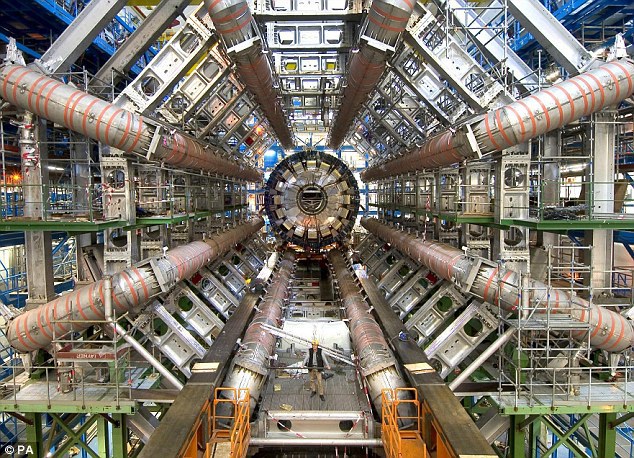The hunt for the Higgs boson – the ‘God particle’ that holds the universe together – is over. Scientists at Switzerland’s CERN (the European Council for Nuclear Research) announced the discovery of the particle to an audience including Professor Peter Higgs, who first suggested the existence of the particle four decades ago. The discovery is the biggest leap in physics for decades – filling in the last gap in our understanding of physics. In the long term, the discovery could lead to new technologies. Professor John Womersley. chief executive of the Science and technology Facilities Council, said: ‘They have discovered a particle consistent with the Higgs boson. Discovery is the important word. That is confirmed. It’s a momentous day for science.’ Scroll down for live video
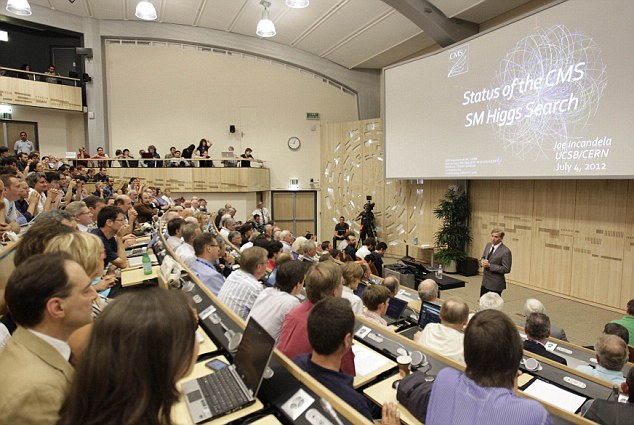

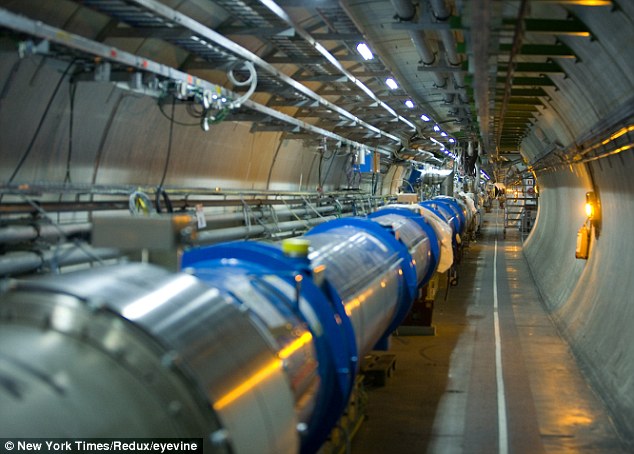

WHY THE HIGGS MATTERS – WHAT THE NEW PARTICLE ACTUALLY MEANS
‘This is indeed a new particle,’ said lab spokesman Joe Incandela. ‘This is something that may in the end be one of the biggest discoveries or observations of any new phenomena that we’ve had in our field in the last 30 or 40 years,’ said lab spokesman Joe Incandela.
The discovery fills in the last gap in the ‘standard model’ of physics – proving Einstein right, and possibly leading to new technologies built on our understanding of the particle. In December last year scientists at the Large Hadron Collider (LHC) – the ‘Big Bang’ particle accelerator which recreates conditions a billionth of a second after the birth of the universe – revealed they had caught a first tantalising glimpse of the Higgs. Since then they have sifted through vast quantities of data from innumerable high energy collisions in an effort to reduce the odds of being wrong. A statistical standard of proof known as ‘five sigma’ is the ultimate confirmation of a discovery. ‘We observe in our data clear signs of a new particle, at the level of 5 sigma, in the mass region around 126 GeV,’ said ATLAS experiment spokesperson Fabiola Gianotti, ‘but a little more time is needed to prepare these results for publication.’ ‘The results are preliminary but the 5 sigma signal at around 125 GeV we’re seeing is dramatic. This is indeed a new particle. We know it must be a boson and it’s the heaviest boson ever found,’ said CMS experiment spokesperson Joe Incandela. ‘The implications are very significant and it is precisely for this reason that we must be extremely diligent in all of our studies and cross-checks.’ ‘It’s hard not to get excited by these results,’ said CERN Research Director Sergio Bertolucci. ‘ We stated last year that in 2012 we would either find a new Higgs-like particle or exclude the existence of the Standard Model Higgs. With all the necessary caution, it looks to me that we are at a branching point.’
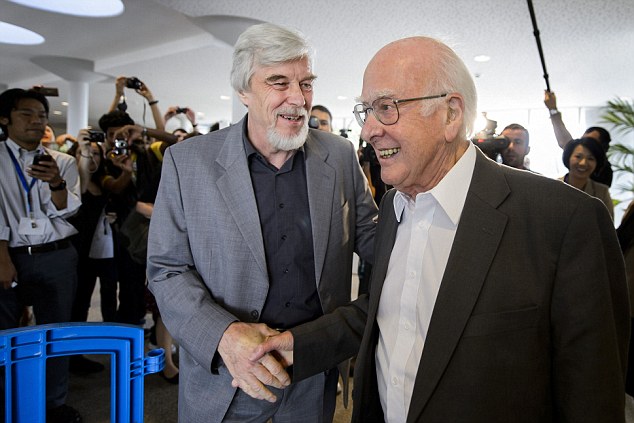

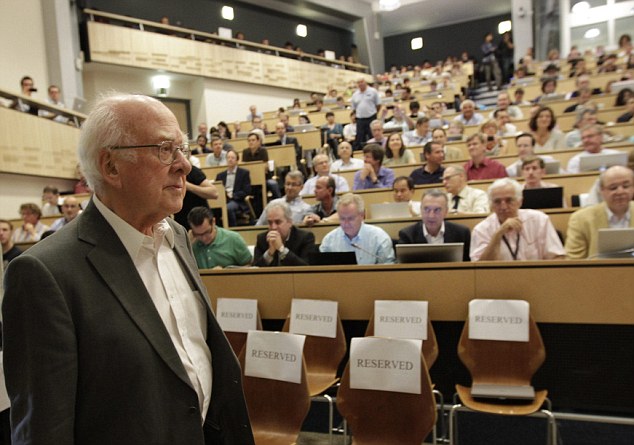

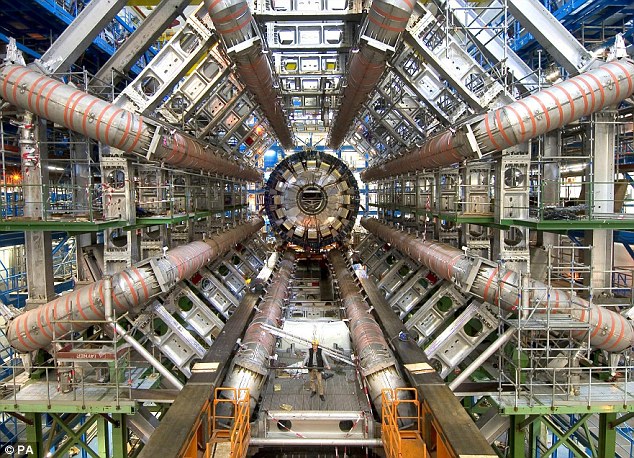

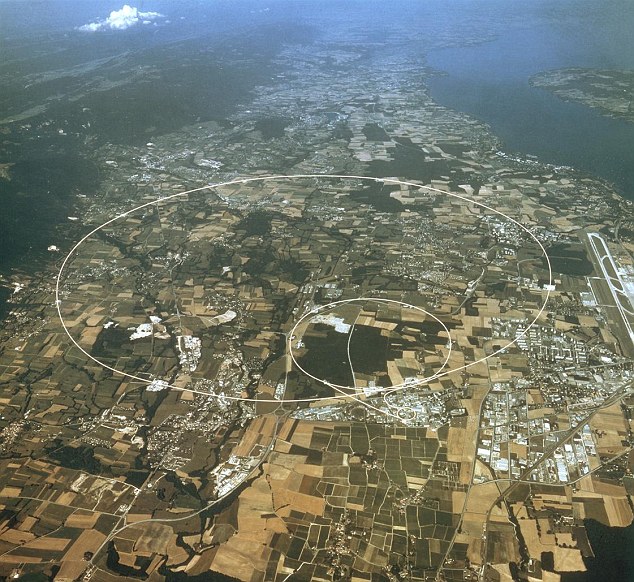

THE ‘GOD PARTICLE’ – WHY THE HIGGS HUNT CAUSED CONTROVERSY
At the LHC, scientists shoot two beams of protons – the ‘hearts’ of atoms – at each other round 27 kilometres of circular tunnels at almost the speed of light. When the protons smash together the enormous energies involved cause them to decay into an array of more fundamental particles. These may then decay further into yet more particles. Physicists needed the Higgs to plug a gaping hole in the ‘Standard Model’, the theory that explains all the particles, forces and interactions making up the universe. So far nothing has been observed to account for mass, and the fact that some particles weigh more than others. According to the theory, the Higgs boson is the emissary of an all-pervading ‘Higgs field’ that gives matter mass. The more particles interact with the field, the more massive they become and the heavier they are.
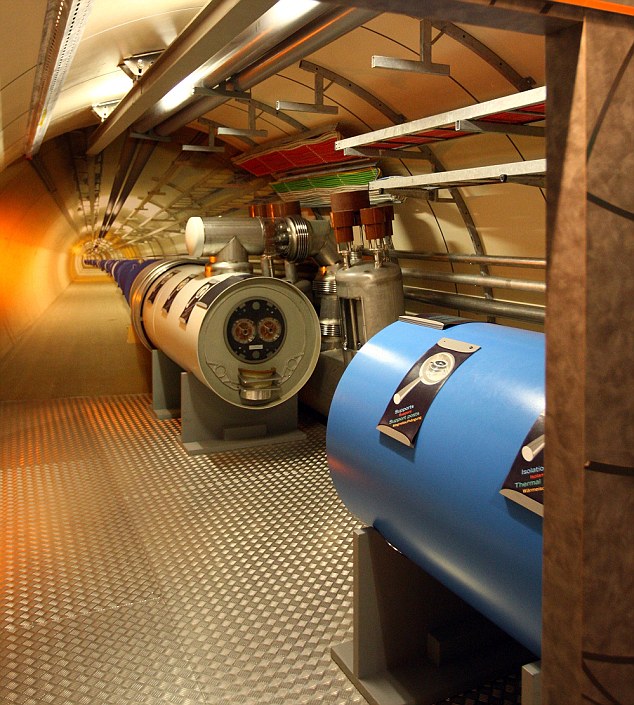

A Standard Model universe without the Higgs boson could not exist. Everything would behave as light does, floating freely and not combining with anything else. There would be no atoms, made from conglomerations of protons, neutrons and electrons, no ordinary matter, and no us. Finding no evidence of the Higgs would mean tearing up the Standard Model and going back to the drawing board with a completely new set of theories.’
TBU NEWS

